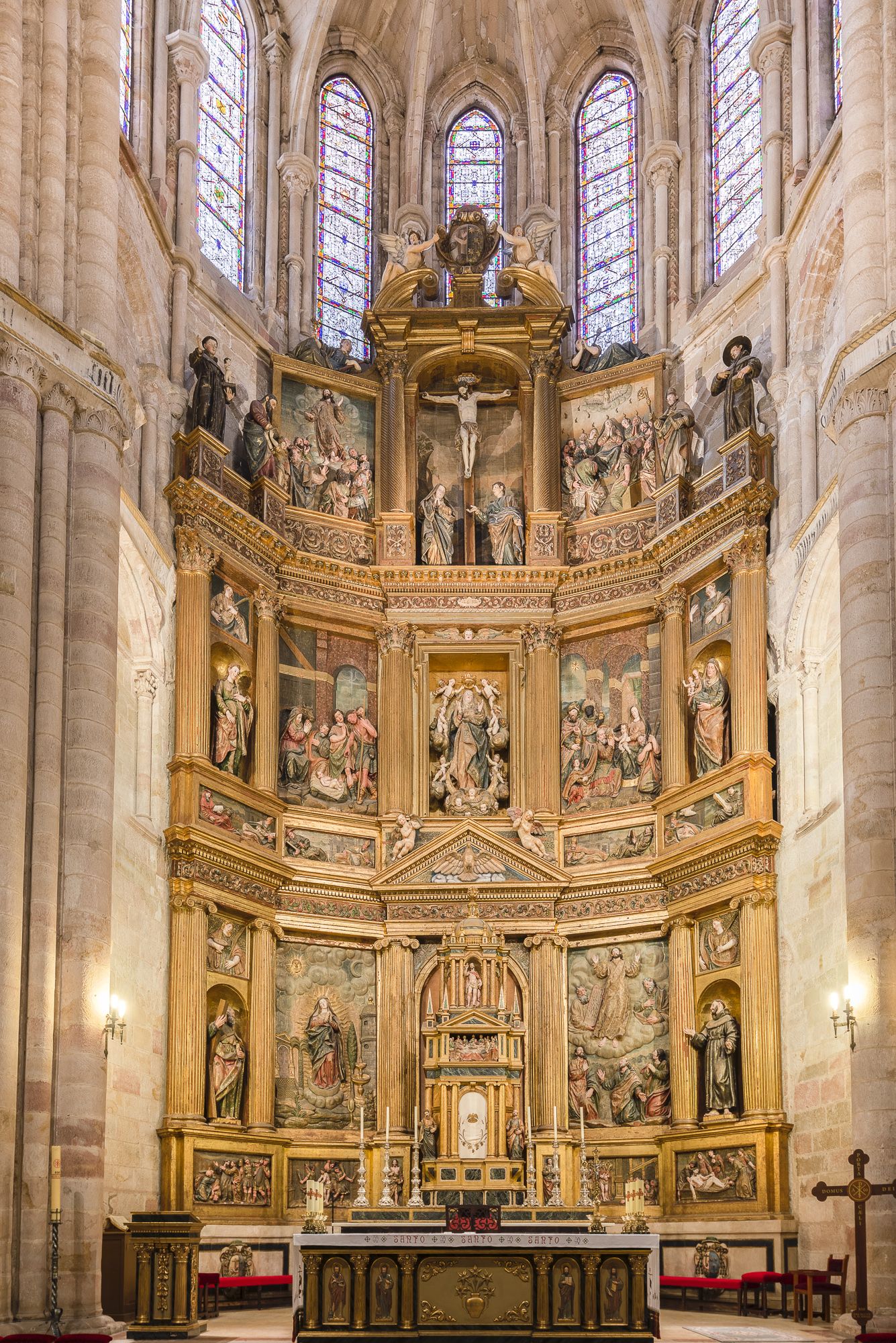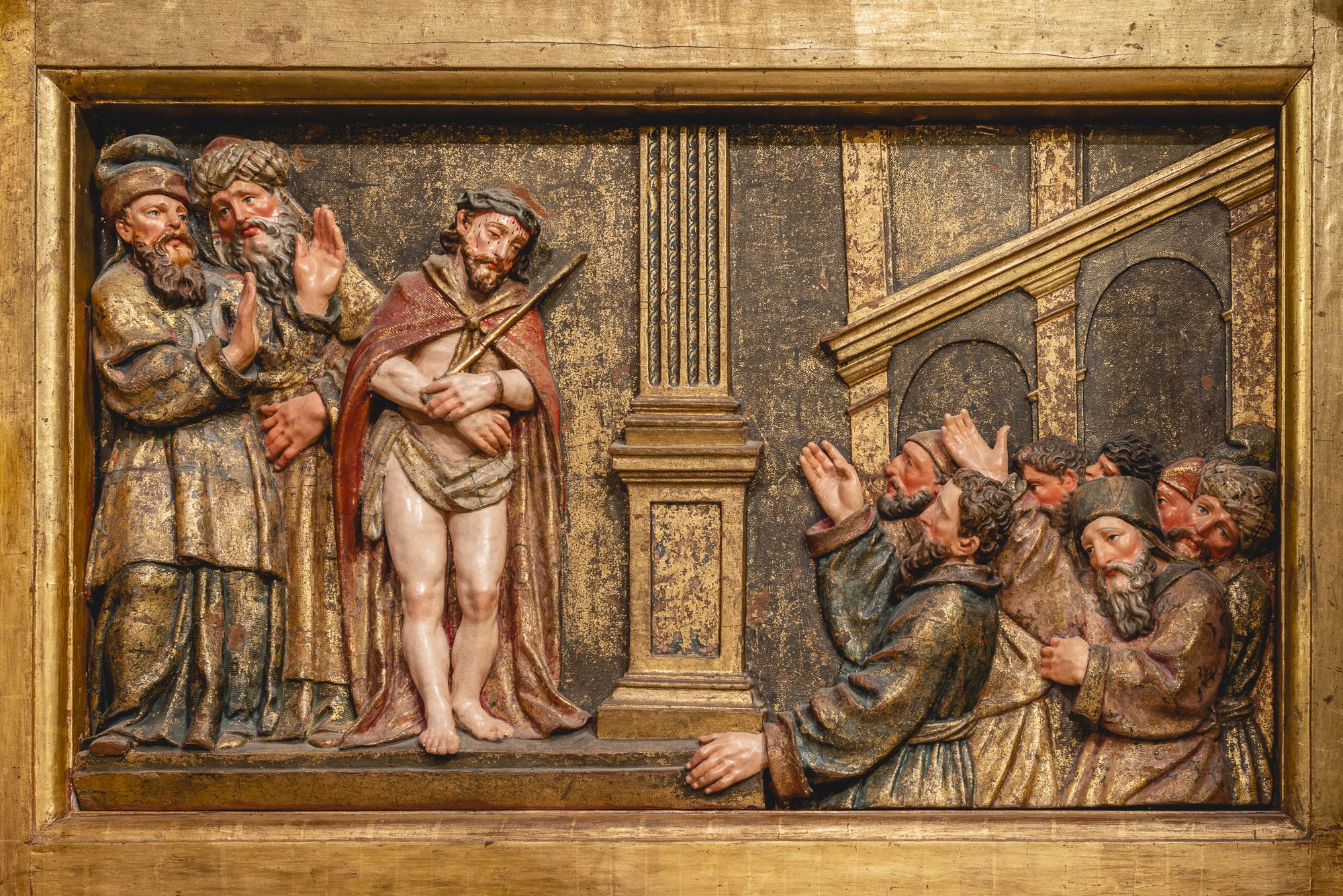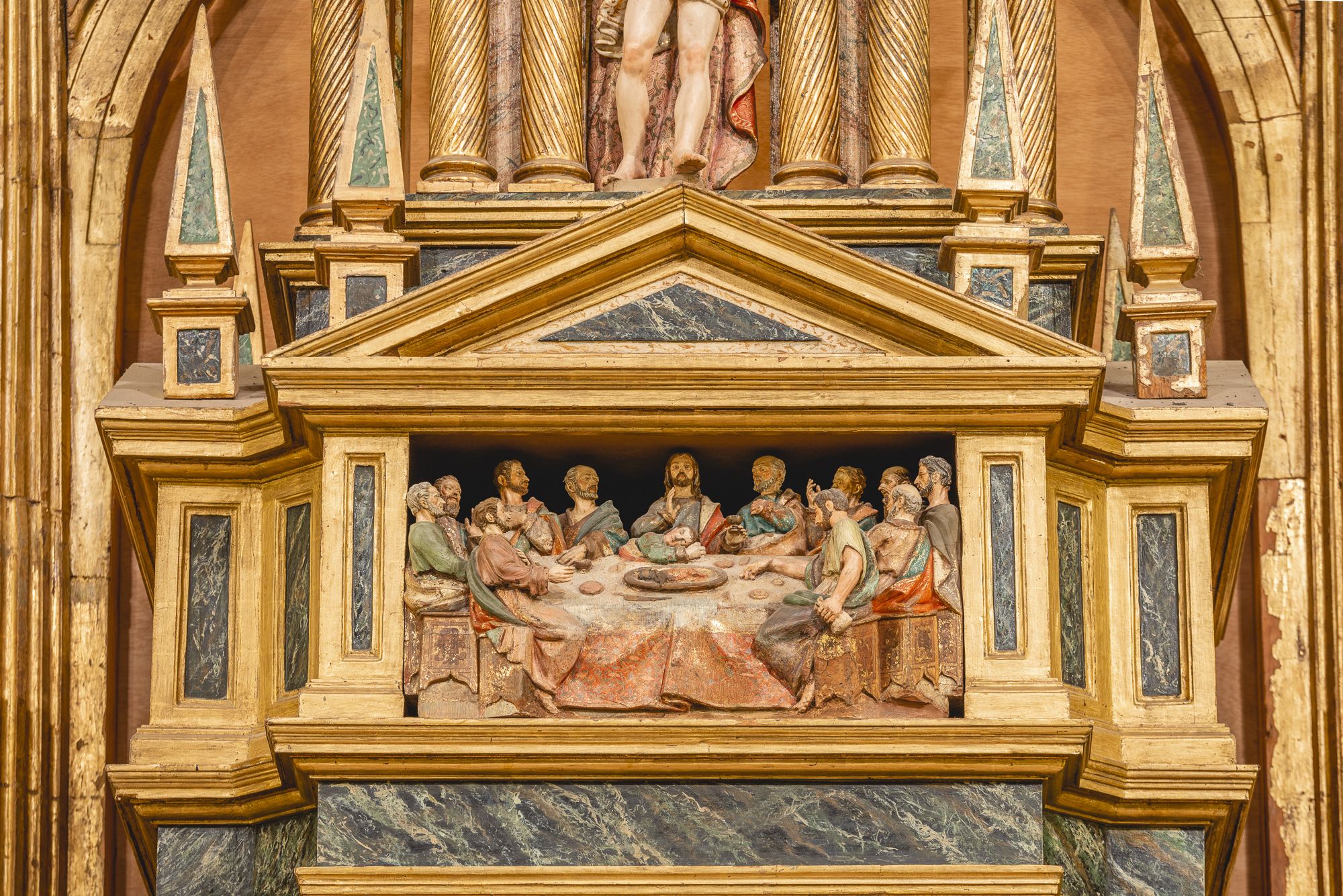his area is closed off by a magnificent wrought-iron grille from the 17th century, provided at the expense of the prelate Fray Pedro González de Mendoza (1623-1639), the son of the Prince of Eboli and Ana de Mendoza, the Duke and Duchess of Pastrana. It was constructed by the maestros Francisco Martínez and Domingo de Zialceta, the Basque grille-maker, who made it in the brief space of four years, and had it in place by the middle of 1633. Five years later it was painted and gilded, and the Calvary which crowns it today, made by Master Juan Rodríguez Soberal, was added. Between the presbytery and the transept there are two famous alabaster pulpits: the Flamboyant Gothic pulpit of the Epistle, or old predicator, dating back to the 15th century, designed by Rodrígo Alemán (in the year 1496 he complains that it was made in alabaster by the Aragonese maestro Gaspar). On its front there is an image of the Virgin with Saint George and Saint Elena, which refers to the titles held by Pedro González de Mendoza (1468-1495); and the Plateresque Pulpit of El Evangel, dating to the 16th century, undoubtedly the masterpiece of the Sigüenza-born artist Martín de Vandoma, who carved it with scenes from the Passion in the brief space of seventeen months. At the sides of the Presbytery there are some tombs of bishops and other personages connected with the cathedral. In the Epistle wall, above the door of the apse nave, there is the tomb of Alonso Carillo de Albornoz, the Cardinal of San Eustaquio (1424-1434), who died in Basle in 1434 during the celebration of the famous council of that name, over which he exercised so much influence that while he lived their opinions were always unanimous, and became divided only on his death. According to the «Chronicles» of Fernán Pérez de Gúzman (1376-1458), when the bad news reached Castile, King John 11 of Castile (1406-1454) being with his court at Medina del Campo: «the death of the Cardinal did great harm at
this time, because he was a very notable man and a great sage, and he served the King well and sustained the Castilian people wherever he went. The King was greatly affected by his death and he dressed in black, as did the Queen, the Prince and all the great figures of the court who were present».
«Although the date 1426 appears on his tomb, it is thought that the tomb was made some ten years later, at the request of his successor and nephew, Alonso Carrillo de Acuña (1434-1446).
Aunque en su sepultura aparece la fecha de 1426, añadida, se estima que se debió ejecutar este sepulcro unos diez años después, por encargo de su sucesor y sobrino don Alonso Carrillo de Acuña (1434-1446).
It is considered to be an early work, in which the Gothic-Burgundian influence can be appreciated. At the head of the burial bed the story of Saint Eustace is shown pictorially. At the sides there is a beautiful Annunciation, Saint Peter and Saint Paul, and at the foot of the bed there is the Saint John’s flanking the figure of Saint Eustace. The recumbent statue is an exquisite work; it is based on the carvings of the Romanesque sculptors of the 15th century. There is a possible connection with the workshop of Janin Lome (Jehan Lome) of Pamplona, who was at the service of John 11 of Castile in Castilian lands.
The adjacent tombs in the lower part on the right are formed by two superposed arches, the upper being a semicircular arch and the lower a segmental arch, each of which holds a recumbent statue of his nephew and niece respectively: María de Castile (+ 1448) and her husband, Gomez Carrillo de Albornoz (+ 1441), true masterpieces which justify the existence of a stone-sculpture workshop connected to the House of Mendoza. In the Evangel wall, adjoining the pulpit stairs, and under a Gothic arch with several archivolts and with trefoiled decoration inside and phytomorphic outside, lies Pedro I of Leucate, in Papal dress, with miter and staff.
The High Altar
he far end of the presbytery is taken up by the large main altar, which is composed of three pieces: lonian, Corinthian and compound, decorated with perfectly worked polychrome engravings, a Renaissance work of art by Giraldo de Merlo (1609, XVII century) of whom Cean Bermudez said: «His work will make him famous as one of the greatest maestros of his time in Spain».
At the top there are seven large pointed-arch windows, highly stylized, which make up the cathedral apse, giving the high chapel the biggest source of illumination in the church-cathedral.
Por encima surgen siete ventanales de arcos apuntados, muy estilizados, que forman el ábside del templo catedralicio, dotando a la capilla mayor del más grande foco de iluminación de la iglesia-catedral.
Facing away from the altar there is a niche which, served as an archive unti11514. It was then converted into an oratory to keep the Blessed Sacrament.
When the apse nave of the apse aisle or ambulatory was built, the then Cathedral Chapter decided to construct a window in the center of the semicircle to illuminate the tabernacle or alcove. This work was carried out by the master builder and stone-mason Juan de Buega.
The decoration which it has today, with a gilded grille on the outer part, was not carried out until 1687. For many years there was always a lighted lamp there.






